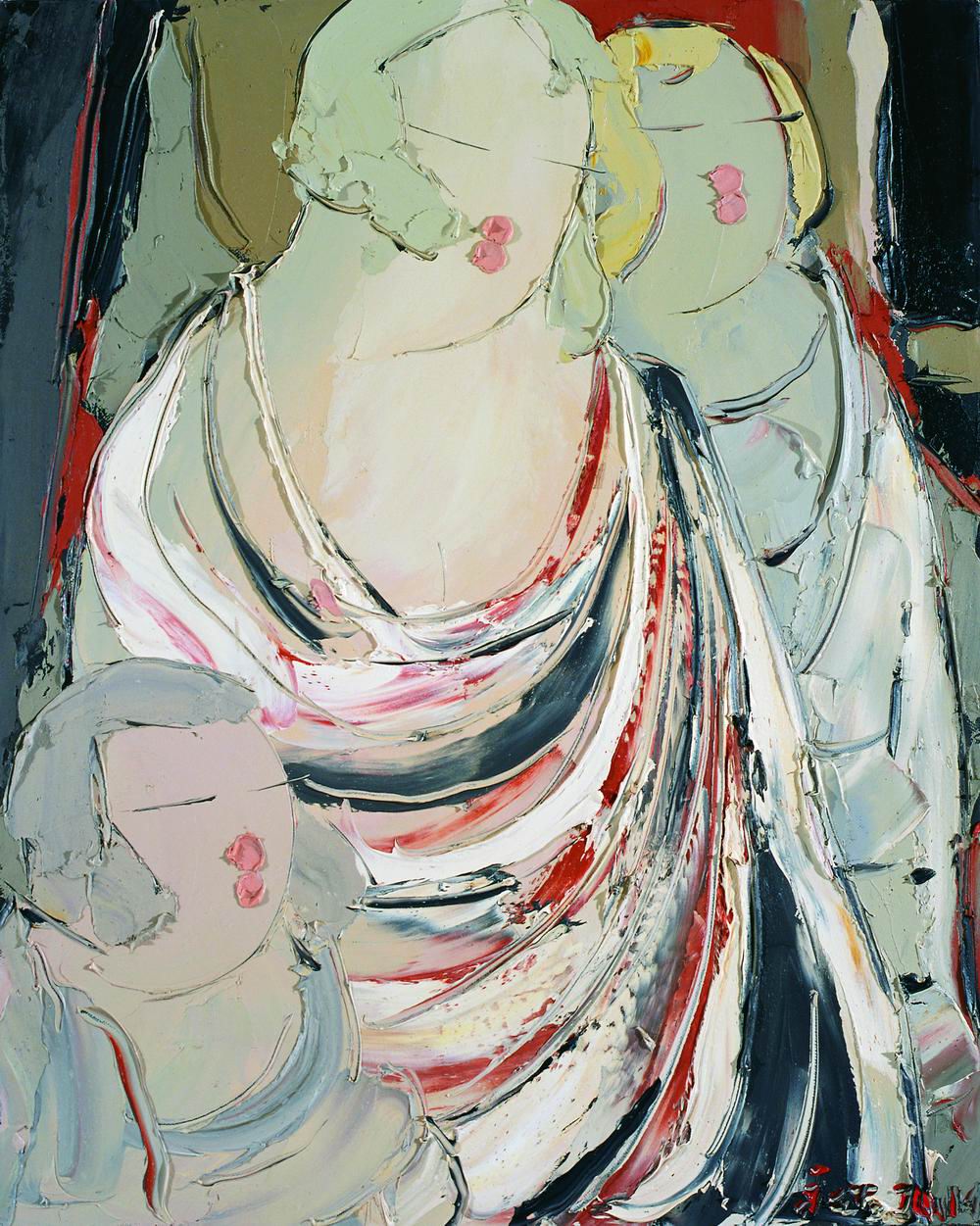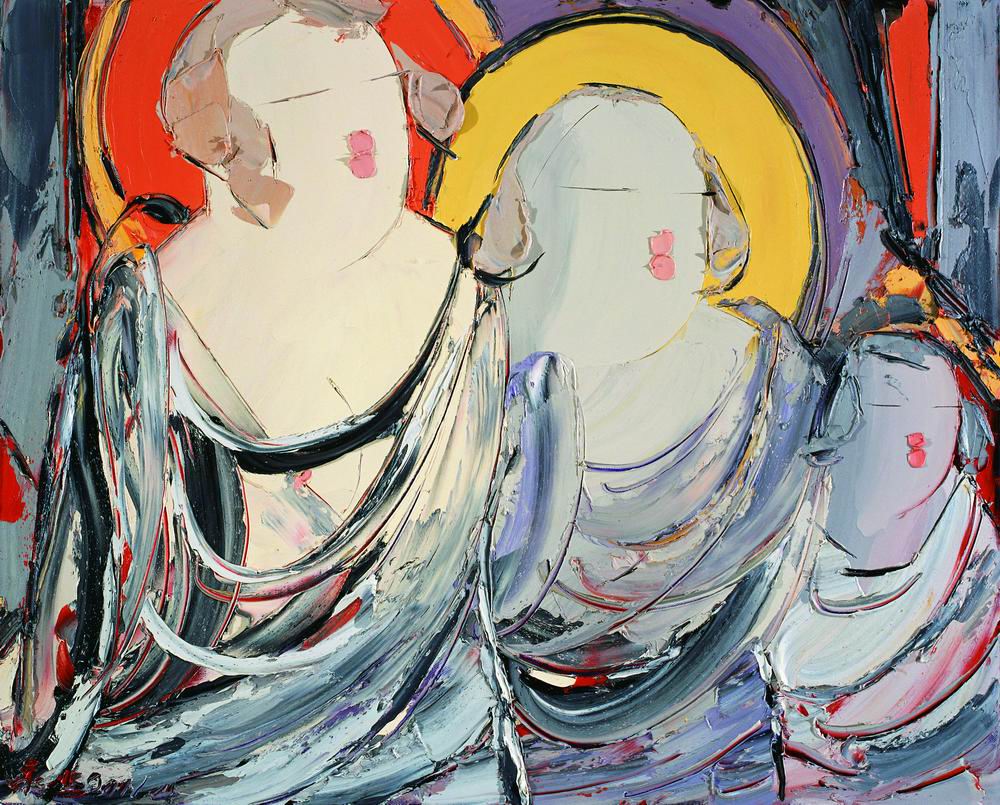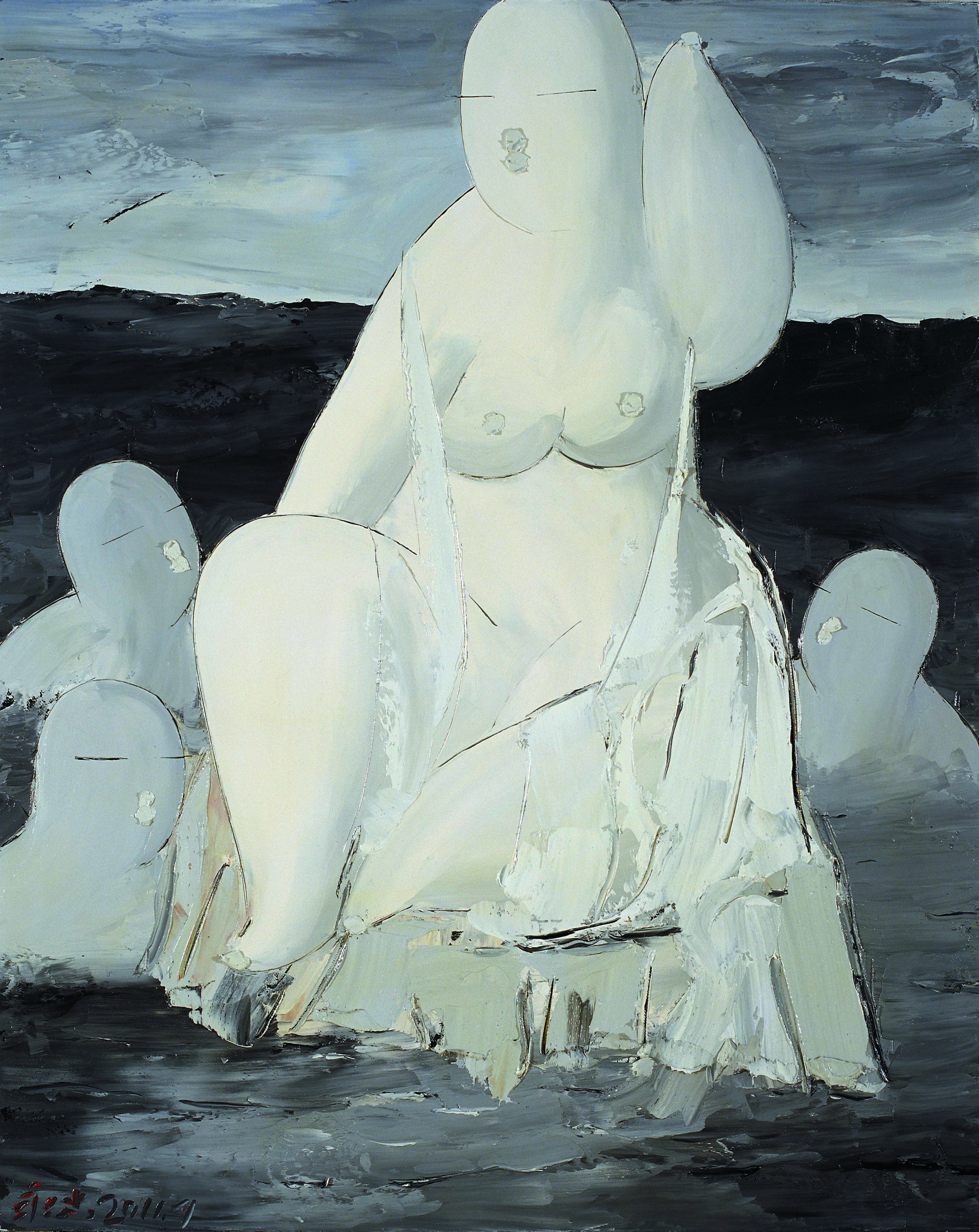Pang Yongjie
RESUMÉ
BIOGRAPHY
Born in Shandong in 1968, Pang Yongjie is recognized as one of the leading Chinese artists who championed China’s "post-contemporary abstract" movement which has been taking place and gaining momentum over the past few years. Pang studied both oil painting and Chinese ink and water painting at the Central Academy of Fine Arts and Shandong Normal University, where he achieved his mastery of expressive color and imagery, evident in the Neo-Expressionism movement, and his refined undisrupted lines and forms, exemplified in classical Chinese abstract painting. He gradually formed his unorthodox abstract figurative painting style in the mid-2000s and is now famous for his voluptuous and playful rendering of fleshy human figures and biomorphic organic forms.
Pang, along with most of his contemporaries, went through the era when the frenzy for political criticism, social cynicism and their ramifications rose to prominence and subsequently dominated almost the entire dialogue of China’s contemporary art for more than two decades. Yet he found himself counter-intuitively exploring with and reveling in the act of abstract figurative painting as a joyous and deeply sensual experience, possibly repelled by the efflux of disingenuously fabricated visual symbols and social signifiers. This rebellious determination led to the alternative artistic U-turn, which somehow answered the inner calling in the collective psyche for the liberation of the self from the framework of socialist ideology and moral surveillance, paralleling to the external antagonism towards the Superstructure, often manifested in art forms of social criticism in China.
In addition to his ever-growing popularity in Asia, Pang has been exhibiting regularly in Europe including Netherlands, Germany and Belgium since the early 2000s as well as an upcoming exhibition in France.
© ASIAN ART PIERS | All Rights Reserved 2013



